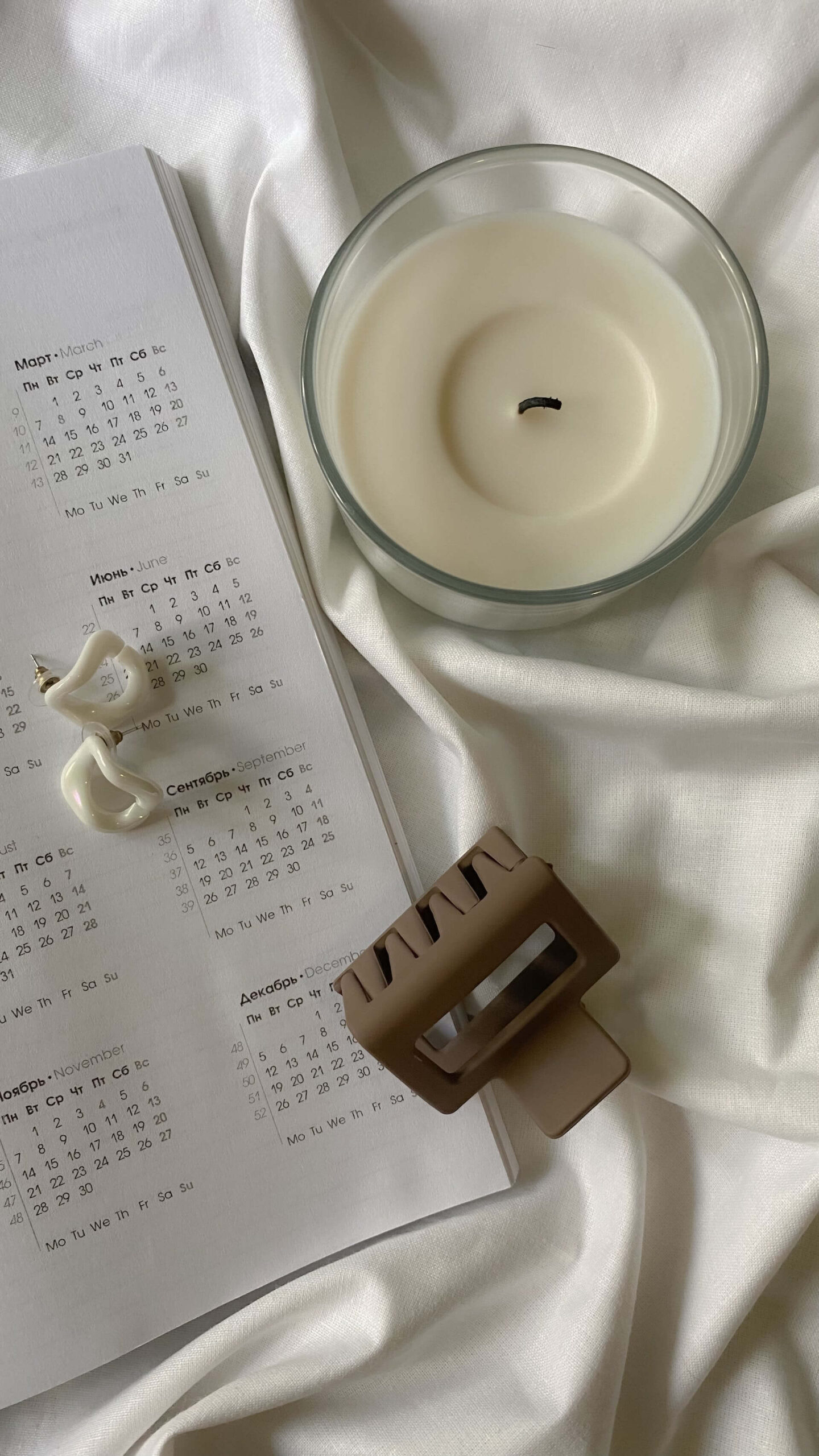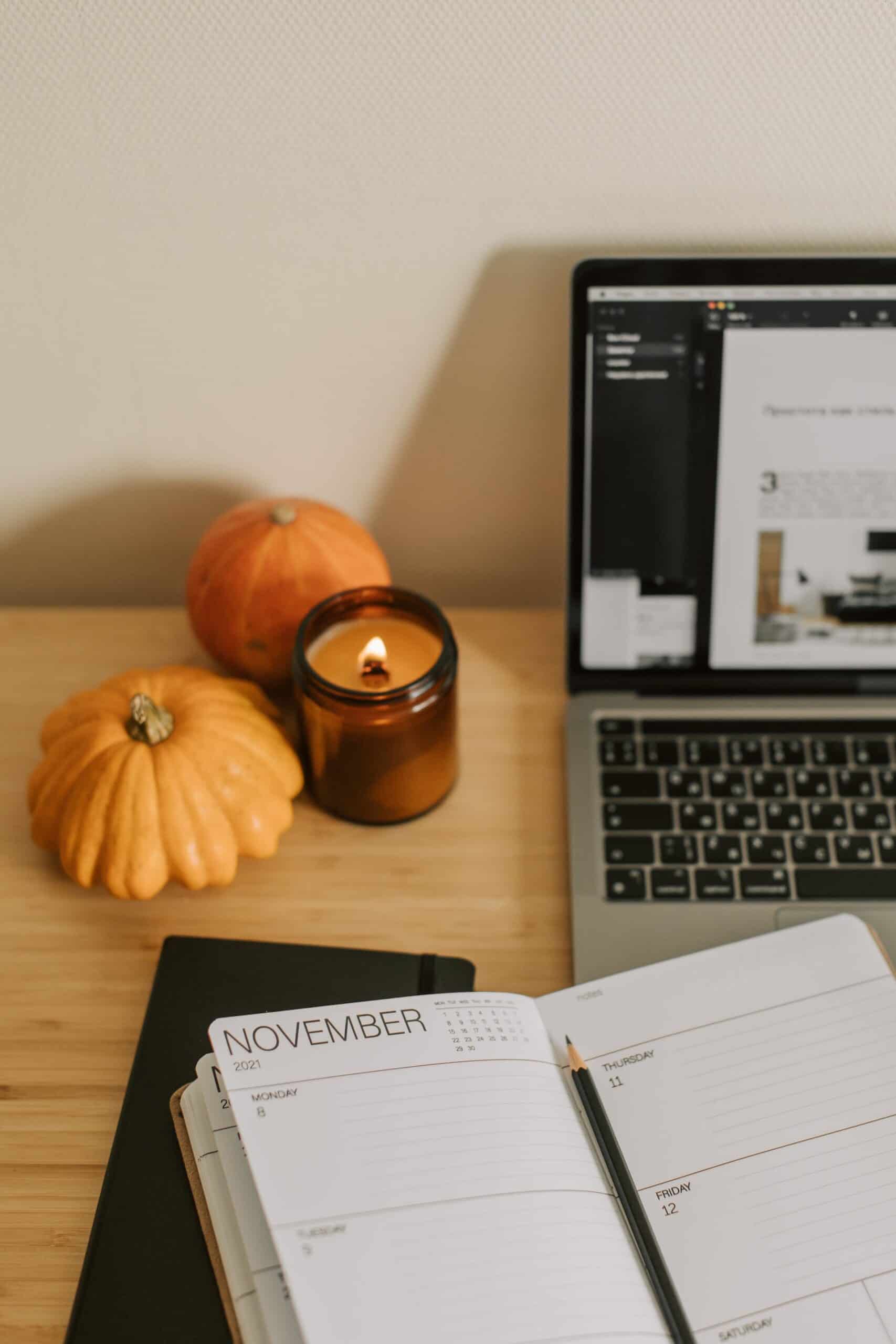Sunday, 9:42 p.m. My phone blares 7 hours of screen time while a blank planner page glares back, judging.
Sound familiar?
In 2019, I crammed twelve tasks into one Tuesday and ended the day sobbing in my parked car. Not fun.
That meltdown birthed the 5-step Gentle Weekly Plan you’re about to try – a low-pressure way to protect your energy and get stuff done.
Open a brand-new planner and feel your eyes glaze over? You’re not alone.
Ready to learn how to plan your week and reclaim your time? Let’s dive in.
Why Traditional Planning Falls Apart
If you’ve found yourself plagued with a lack of motivation to plan, there are a few common reasons why.
1. You Overplan Every Hour
When you try to map out every single hour, it’s no wonder that you end up feeling overwhelmed and not planning at all.
Attempting to plan every minute leaves you with no room for real life, or leaves you disappointed because you didn’t stick to your overpacked plan.
2. You Forget Rest or Buffer Time
You’re skipping buffer time if you plan your life like you’re a machine instead of a real, live person. Planning this way makes you bound to leave out the non-negotiable time needed for rest or buffers between tasks.
You’re not superhuman, and you can only do so much daily (or weekly or monthly).
3. Making Plans That Are Too Ambitious
If your plans include the proverbial kitchen sink, i.e., finishing everything on your to-do list every single day or simultaneously following through with the tasks necessary to accomplish 20 goals, the idea of planning will likely put you off.
You may be trying to avoid inevitable disappointment or failure. Rest assured, it’s not you; it’s the plan.
Reminder: Planning isn’t about doing everything perfectly. It also isn’t about filling every second of your time.
It’s about making time and space for what matters, keeping track of important tasks, and giving yourself space to breathe.
How to Plan Your Week: The Step-by-Step Stress-Free Method
If you’re looking for a realistic, anti-burnout method for planning, you’ve come to the right place.
Think: actionable, easy, and flexible methods that are focused on energy management, not perfection.
1. Brain Dump Everything First
If you know me, you know that I’m a big fan of brain dumps. This underrated task allows you to:
- Clear the mental clutter and jot down every random thought, to-do, appointment, and task.
- This is free-form. There’s no sorting, planning, or pressure involved. Just get the thoughts out of your head.
Pro Tip: A growing body of research shows that spending just 5–10 minutes free-writing a few times a week can relieve stress and improve focus.
2. Prioritize Your Top 3 Goals (For the Week, Not the Day)
This important step helps you to narrow down what’s important and filter out what’s not.
- Survey your list and mark the items that jump out at you. Then, ask yourself, “What are the three most important things I want to accomplish this week?”
- These are your anchors for the week. Anything else you accomplish is a bonus.
3. Block Out Rest and Self-Care First
If your planning sessions typically consist of plugging in appointments and duties only with no time for yourself, we need to change that.
- Rather than including commitments for others at the start, protect your energy by planning downtime, breaks, fun, and rest first. Yes, first.
- Need inspiration for this step? Think penciling in time for quiet evenings, non-negotiable workouts, and lunch breaks that aren’t grim desk lunches.
4. Assign Tasks to “Energy Zones”
Have you ever noticed that you’re better able to accomplish certain things at certain times of day? These are “Energy Zones.”
- Feeling high-energy at a specific time of day? Do the most difficult tasks (like writing or problem-solving).
- Feeling low-energy at a certain point? Handle the easy, low-lift wins (like emails, errands, chores, etc).
- The purpose is to listen to and harness the natural rhythm of your body and plan around it.
Picture logging off Friday with energy to meet friends – because you planned with your body, not against it.
5. Keep It Flexible (And Forgive Yourself When Plans Shift)
Life is unpredictable, and your plans will inevitably change. The goal is to roll with the punches.
- You can make yourself feel better about penciling things into your planner by literally using a pencil (or a *fancy* erasable pen) so that you can amend things whenever necessary.
- Adjust without guilt! Moving a task to a different day or rescheduling something for next week doesn’t mean you’ve failed; it means you’re human and realistic.
Tools to Make Weekly Planning Easier
Now that you’ve got the techniques, it’s time to pick your tools.
Paper Planner vs. Digital Planner
I have to admit that I’m a paper planner fan (team analog!) myself, but both paper and digital planners have their perks.
- Paper Planners: If you enjoy the tactile feeling of pen to paper, the satisfying sensation of turning pages, and a lack of distractions, paper should be your choice. Eco-tip: choose recycled paper or FSC-certified planners to keep trees happy.
- Digital Planners: If the idea of all your plans and thoughts being searchable, options to make your planner portable on your phone or tablet, and easy-peasy updating while on the go, digital planners are for you.
Visual Schedules
If your plans often become a distant memory, visual aids are your friend!
- Use sticky notes, whiteboards, notepads, or a color-coded calendar to keep all your plans visible and front of mind. In many cases, if you can’t see it, it doesn’t exist. Visual schedules and aids help to change this.
Calendar Apps with Reminders
If you’re typically glued to your phone, harness this power and put your calendar there as well.
- Use repetitive reminders, alerts, and notifications to keep tasks from falling through the cracks. Keeping your calendar on your phone helps to make sure that your plans are always being (digitally) nudged towards you, and you’re less likely to forget them.
Pro Tip: Don’t overcomplicate your system. The best tool is the one you’ll actually use.
Ready to try it? Screenshot Step 1, tag @TheEverydayFlourish on IG, and I’ll cheer you on Sunday night.
The Takeaway
Picture flipping your planner shut Friday night, fingers still ink-smudged and a latte cooling beside you—week conquered.
TL;DR: Your planning should support you, not stress you out.
Planning is meant to be a tool to make your life easier, not stress you out and overwhelm you.
If the idea of planning out your life makes you spiral, it’s time for an overhaul that simplifies the process and makes the action functional.
Start small! Planning can be imperfect, messy, and spontaneous. The goal is to let your weekly plan evolve with you as you figure out what works for you.
Need help figuring out where to start? Pick one step from this guide and try it this week.
I promise that the overwhelm that you’re used to experiencing will be a thing of the past with the help of these simple tips.
If this article interested you, you might also enjoy my articles on afternoon routines, burnout recovery, and anxiety management.

Planning doesn’t *have* to be overwhelming.
Real-Life
Work in Progress.
Founder. Writer.
Roxy is the creator of The Everyday Flourish, a relatable personal growth blog for women who are tired of burnout, chaos, and hustle culture.
A recovering overthinker and unofficial life guinea pig, she shares honest self-care strategies, ADHD-friendly productivity tips, and mindset shifts that actually feel doable.
Around here, personal growth comes with grace, not pressure - and a lot fewer to-do lists.








